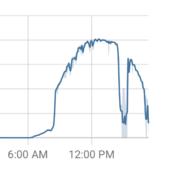Bulldogg
New Member
My question is more than likely a good ole' rookie question, but I'm not too scared to ask. So, lets say we have a solar system, regardless if portable or fixed, but both have battery storage and solar panels charging them. Let's say the batteries are at 100% charge, and there are devices (let's say a computer, TV, etc . . ) that are directly connected to the system. If the batteries are at 100% charge but there is plenty of sunlight charging the panels, do the systems directly bypass the batters and provide power to your plugged-in devices? Alternatively, does it constantly take from the battery, and then the battery is constantly being recharged? If it is the latter, does this reduce battery life? Thanks, I hope the question is not too confusing to understand; I am a rookie at this. Sorry if this is a repost but I tried searching other post first. . . No luck for me.





